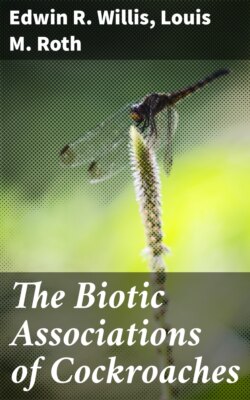Читать книгу The Biotic Associations of Cockroaches - Edwin R. Willis - Страница 198
На сайте Литреса книга снята с продажи.
Ectobius lapponicus
ОглавлениеSoutheastern Europe.—Numerous under stones on Trebovic (Burr, 1898).
U.S.S.R.—Found in wooded communities and peat bogs (in northern part of its range); males occur predominantly on herbaceous plants and bushes, but females hide under fallen leaves, moss, etc. (Bei-Bienko, 1950). It populated about 25 percent of the aspen trees in an experimental plot, feeding in galleries in the bark of young branches; there were 25 or more individuals per tree (Stark in Bei-Bienko, 1950).
Germany.—Abundant in woods; in pine woods in company with Stenobothrus vagans and Tettix kraussi. Numerous in low aspen bushes in forest. Numerous in deciduous and coniferous forests on trees and underbrush; under fallen leaves and moss; on oaks (Zacher, 1917). In foliage of young oak on top of mountain (Ramme, 1923).
Great Britain.—Under moss and dry leaves, among woodland undergrowth, and, generally, on vegetation close to the ground; occasional on bushes and trees (Lucas, 1920). Nymphs in heather in February and later; adults among rushes fringing pond in July (Lucas, 1925). Nymphs and males on rushy vegetation; unusually abundant on low herbage in dried-up swamp (Lucas, 1930).
